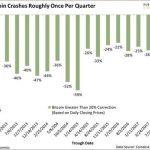The question has gone viral lately, courtesy of the recent rise in interest rates. The benchmark 10-year Treasury yield, for instance, edged up to 2.73% yesterday, the highest in nearly four years. The 2-year rate’s ascent has been even stronger, rising to a 10-year high on Tuesday.
The upward bias in rates has prompted two influential bond-fund managers – Double Line’s Jeffrey Gundlach and Janus Henderson’s Bill Gross – to advise that trendlines for yields could be signaling an end to fixed income’s long-running bull market. Earlier this month, Gross tweeted that “Bond bear market confirmed today. 25-year long-term trendlines broken in 5yr and 10yr maturity Treasuries.” Meanwhile, Gundlach opined that “3.22 percent on the 30-year Treasury yield “would end the bond bull market for good.”
The bond gurus may or may not be right, but the larger question is whether the basis for their analysis (studying trends in rates, which is the equivalent of prices for bonds, albeit in inverse terms) is valid? Do trends in rates matter for bond investing?
Not really, according to some financial advisors, at least not in the short-to-medium term. Cullen Roche at Pragmatic Capitalism dismisses such analysis, asserting that “lines on a chart” aren’t worthy of attention. Rather, inflation is the primary, perhaps the only relevant factor for making decisions about fixed-income investing. Roche writes that “drawing short-term trend-lines on charts is a form of short-termism that confuses short-term market trends for long-term secular trends in the real economy.”
In other words, long-term secular trends in inflation aren’t necessarily changing just because some short-term trends on interest rate charts were broken. This analysis is putting the cart before the horse in that the secular fundamental trends drive the lines on the chart and not vice versa.













Leave A Comment